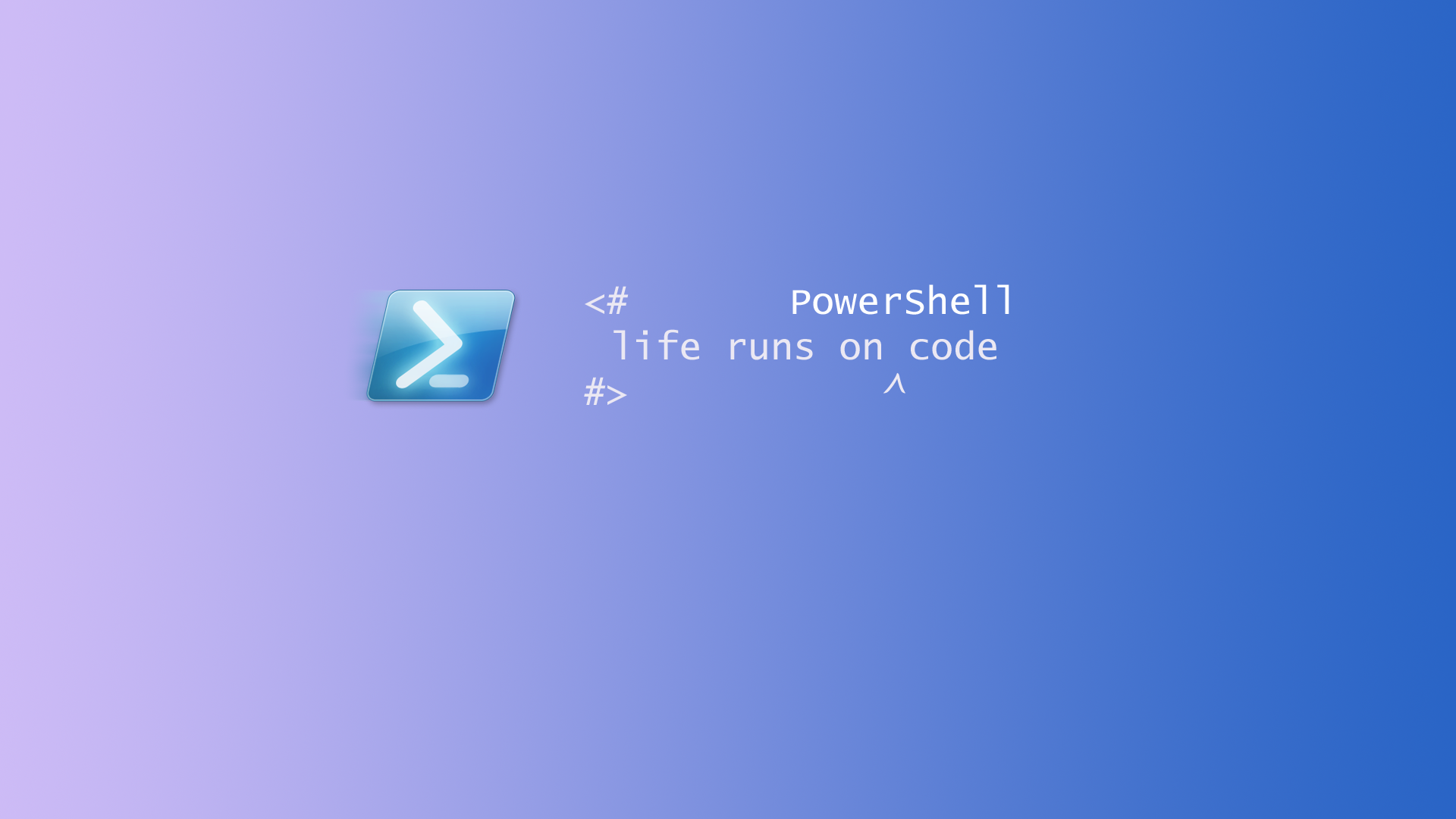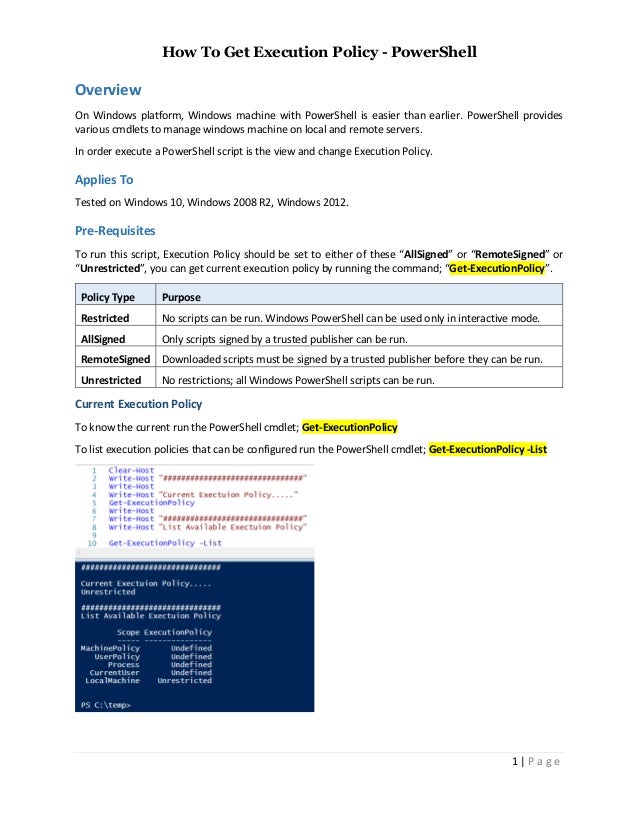

This is the default scope that affects all computer users and is stored in the HKEY_LOCAL_MACHINE registry subkey.

When defined, it takes precedence over all other scopes. It affects all users who log onto that computer, and an Active Directory group policy object sets it. MachinePolicy – This scope is limited to a single computer.To accommodate all of these contexts, PowerShell has five different contexts or scopes you can define an execution policy. PowerShell executes scripts under a user’s logged-in context or a global machine context, via scheduled tasks running as SYSTEM or within the scope of a single open PowerShell console. Related: Managing X.509 Certificates (For Mortals) Execution Policy ScopesĪs you’ve learned, execution policies restrict script execution, but PowerShell can execute scripts in many different contexts. Their primary purpose (most notably when configured more strictly) is to ensure you trust the script you’re running is cryptographically-signed with a certificate. Execution policies don’t typically prevent script execution of all scripts.

If you trust a script, chances are, it’s not malicious. After all, you can bypass a defined execution policy easily, as you’ll learn later.Įxecution policies are based on trust.

Microsoft says an execution policy isn’t technically a “security” measure but more of a gate you can open and close. Execution policies don’t prevent you from running PowerShell code in the console as a shell but script execution. PowerShell execution policies are a security mechanism to protect your system from running malicious scripts. If you’ve ever run into the error described above, you’ve encountered an execution policy. But, if you’re working with PowerShell 6+, you may find small differences in behavior. Execution policies are not unique to Windows PowerShell, and they operate very similarly in PowerShell 6+. This tutorial was written with Windows PowerShell in mind, and all demonstrations were performed with Windows PowerShell. By the end of this post, you’ll know not only to run scripts but how to use execution policies too! In this post, you’re going to learn about PowerShell execution policies and how to manage them with the Set-ExecutionPolicy cmdlet. PowerShell Script Execution Disabled Error


 0 kommentar(er)
0 kommentar(er)
